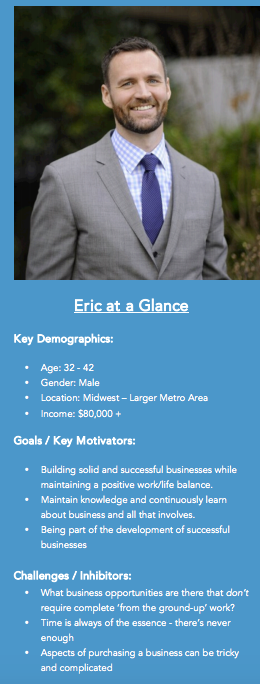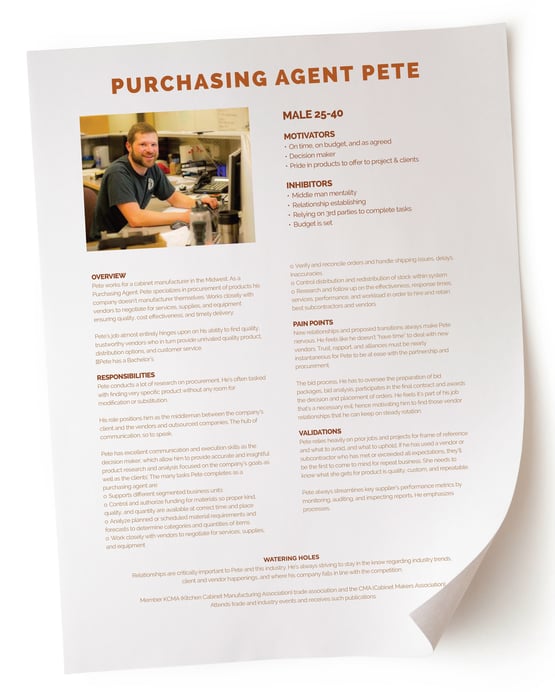
You, like every other company out there, need buyer personas to help you focus your nurturing strategies and content creation. A buyer persona is a fictional character that represents your ideal prospect, lead, or customer. They help ensure you're talking to the right people, in the right way, at the right time, about the right information.
But that’s not what this blog is about. (You can read up on The Ins and Outs of Buyer Personas if you’re wanting the prequel.) This blog is about the actual process of creating a buyer persona and what goes into this crucial piece of the inbound marketing puzzle. I’ve sat down with my fellow inbound marketers and hashed out our buyer persona creation process, as we’ve continually perfected (OK, disclaimer: we’re not perfect) it. Take a deep breath; we’re goin’ in.
How To Create A Buyer Persona: An Art & Science
Putting together a buyer persona is not for the faint of heart. That might be a bit dramatic … but seriously – this takes time, patience, and perseverance. Sometimes information and insight comes really easy, and sometimes it’s like pulling teeth. But the outcome is always the same: rewarding and extremely helpful to putting together the very best inbound marketing plan.
To help break down the process, I’ve included a few of our client examples along the way.
1. Discover Who They Are
When we’re meeting with a client during the discovery process, getting to know them – and their current + ideal customers is first and foremost. We listen and ask questions … lots of questions, trying to hone in on exactly who they see as their target customers and whom they’d prefer were not their clients. Say we’re talking about Bernick’s; some of our initial questions would be:
 Why would someone choose Bernick’s?
Why would someone choose Bernick’s?- Why do leads decide not to choose Bernick’s?
- What is Bernick’s best at?
- Who is Bernick’s not for?
- Fill in the blank, when it comes _____ Bernick’s is a great fit.
- Fill in the blank, when it comes _____ Bernick’s isn’t a good fit.
- What are the biggest selling points for Bernick’s?
- How does Bernick’s “WHY” tie back to your target customers? What resonates with them?
2. Interview Your Client
Pick up the phone and/or hit the pavement. At this point we always ask our clients to provide us with some current contacts we can call on and have conversations with. Ideally we like to talk to a few fans and promoters of their brand, as well as someone who was a bit harder sell. It’s good to get contacts across the spectrum – in all ways – size, demographic, relationship style, etc. During these interviews, remember to ask leading questions to help you get inside their head a bit. Say we’re working on a persona for Walker Methodist, we’d ask questions like:
- Why did you choose Walker Methodist?
- How did you find out about them?
- What was your research / exploration process like?
- What frustrated you?
- What does Walker Methodist do better than anyone else?
- Where/how did Walker Methodist fall short?
- Who did you turn to (people, places, etc.) for help making this decision?
- What questions did you have going into this?
3. Do The Research
There is where we put our investigative hats on. We conduct our due diligence with research sites, and also find ourselves in the depths the internet looking at things like LinkedIn profiles, blogs, website bios, etc. The places where people showcase their education, their work life, their personal life, who and what they subscribe to, what words they do or don’t use … the list goes on and on. And we’re not just talking a bio or profile or two. Remember, art and science. The ‘due diligence’ comes in because this part of the persona process is important to understanding how this person (or these types of people) think, act, and talk.
4. Create Your Persona
And now our creative sides come in. We start to pull all the information we’ve gathered from phone calls, conversations, tweets, website bios, blogs, LinkedIn profiles, etc. to start piecing together a story and create a profile of who exactly this persona is. Items we always include in personas are:
 Profile Overview
Profile Overview
- Who is this person at a glance? What is their story? What is it like to be around him/her? What keeps this person up at night?
- Key Demographics
- Age, gender, location, education level, income, etc.
- Roles + Responsibilities
- What roles and responsibilities describe this person? Personal and/or Professional
- Watering Holes
- Where does this persona go for information and input? Who do they listen to, follow, and subscribe to? What organizations are they a part of?
- Key Drivers + Motivators
- What drives this person? Why do they do what they do everyday? What motivates them to preserver in difficult situations? What are their goals?
- Pain Points
- What problems is this person facing? What pain points commonly affect this person?
- Validations
- What inputs help this person make a decision? Do they look at review, reports, or research? How do they feel confident about decisions?
- Objections
- What objections with this person have to your products and/or services?
HubSpot also provides a persona building worksheet and a persona template that can be helpful in the initial stages of creating your own buyer personas.
Do’s + Don’ts
- Don’t get caught in the weeds. Discrepancies will happen; use your gut. Don’t forget you’re creating a general idea of who people like this persona, not one particular person.
- Don’t forget that personas are FICTIONAL. These are not real people, customers, or clients.
- Don’t go too surface level. If you don’t do enough research or ask enough questions, you’ll end up with an over-simplified persona, which will do you no good.
- Don’t be afraid to use real quotes from interviews and research as part of your buyer persona profiles – remember, these are for your use and benefit.
- Do talk to family and friends – chances are they fit into some personas. I ask my parents, siblings, and friends questions all the time to get an idea of how they think, where they go for information, how they say things, etc. to get better insight. Use your resources and your own network!
- Do take time to talk to current customers and clients of the business whose persona you’re creating. They converted, so what helped them get there?
- Do continually make adjustments to your persona. As you continue learning, add new information and resources. But, if you find yourself nearly re-writing a persona, perhaps it’s time to develop an additional persona for your reference and strategies.
- Do include fields on forms to continually capture persona information and insight.
Now Go Do the Dang Thing
I know this seems like a lot, and I’ve probably made things sound complicated, but once you get going in the process, you’ll likely be surprised how and where you’ll able to piece together the information and research for a great buyer persona. Once you’ve got your own shiny new buyer persona, USE IT! Refer to it before you start writing a blog, when you’re updating website design and copy, as you’re crafting social posts or coming up with new videos, give it a read through before you embark on a new campaign or strategy … you get the idea. When you ‘start with why’, make sure your buyer personas remains at the forefront.
Go get ‘em!
